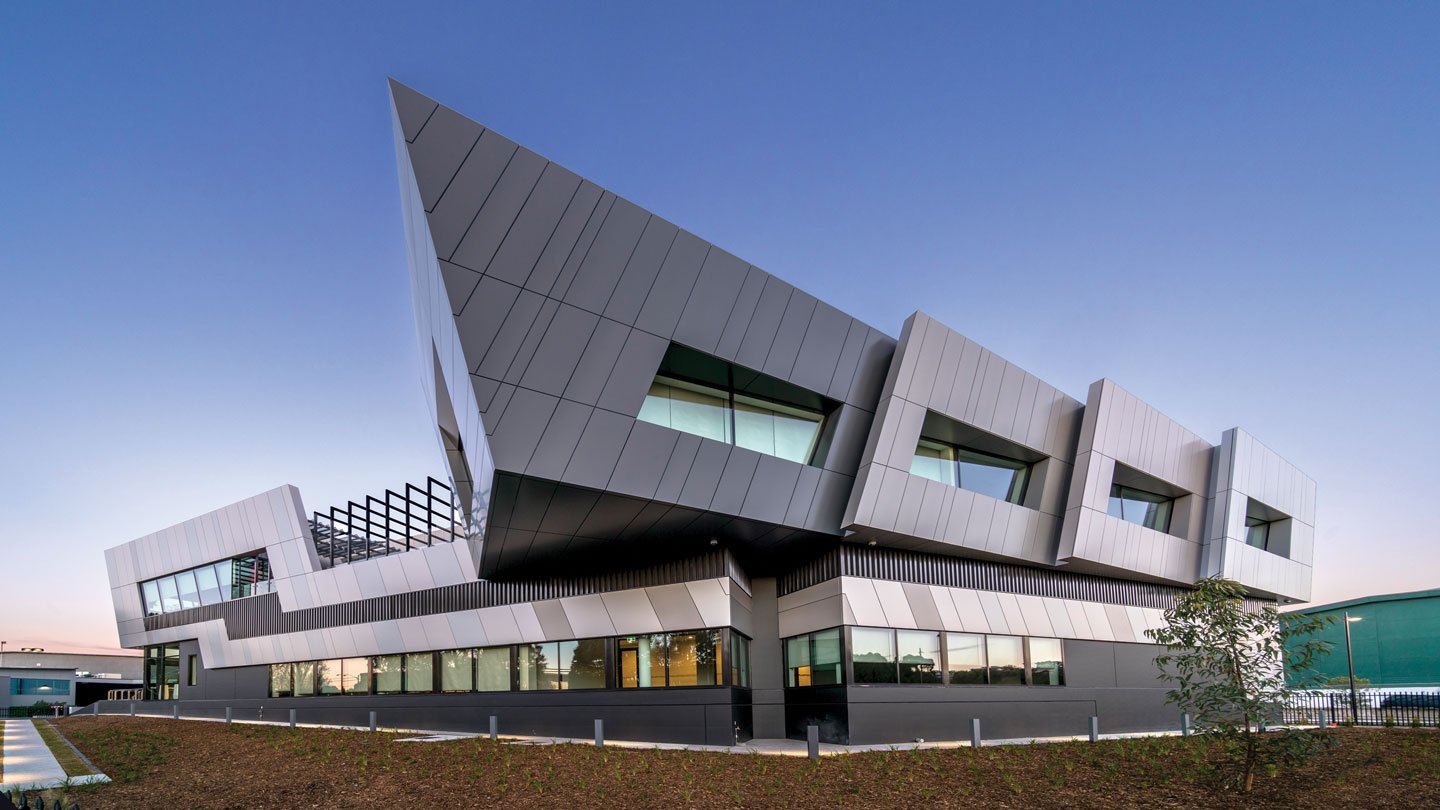
Data Center Real Estate: Challenges and Opportunities in the Digital Age
Data center inventory growth has accelerated across North American markets.
Data center real estate is hot and getting hotter as vacancy rates plummet to historic lows of around 3% in most markets, demand jumps and rents rise. While the adoption of artificial intelligence (AI) by business and the public is partially responsible for this growth, a tsunami of data is also flooding into data centers from numerous sources, including 5G, the internet of things (IoT), e-commerce, streaming services, cloud computing and virtual reality (VR). And coming soon to a neighborhood near you — the autonomous vehicle, which likely will generate literally terabytes of data daily through its high-resolution cameras, radar, lidar (light detection and ranging), GPS and automotive networks.
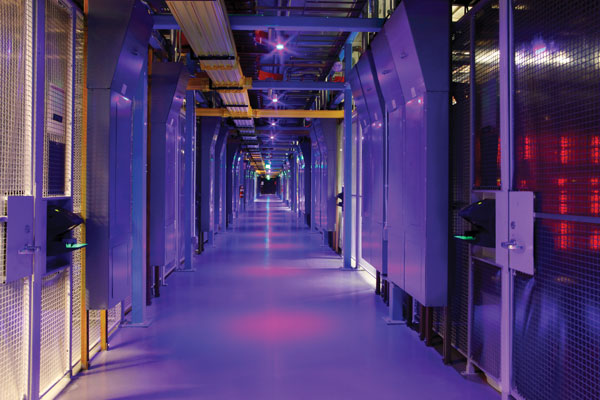
The interior of an Equinix IBX® data center. Source: Equinix
With or without AI, the level of data creation is almost unfathomable, explained Carrington Brown, senior managing director, development, Affinius Capital. “Globally, there are approximately 200 million emails sent every minute and about 350,000 posts to X [previously known as Twitter] every minute. There’s more than 100,000 hours spent on Zoom calls globally every minute. This level of activity necessitates a substantial supportive infrastructure.”
This vast production of data has whetted the appetite of institutional investors who want to boost the bottom line of their real estate investments. “The categorization of data center companies can be broadly divided into several major groups,” noted Pat Lynch, managing director for CBRE’s Data Center Solutions. “First, there are large publicly traded data center companies, with Equinix and Digital Realty being the leaders in this area. Next, we have private equity-backed businesses. These are controlled by entities like Carlyle, KKR, Macquarie, BlackRock, Blackstone, among others, who have a substantial interest in the data center space. Lastly, there are the big hyperscale companies, which in some cases own their own data centers. These are often located in secondary markets such as Cheyenne, Omaha or Des Moines and are at a massive scale.”
“We are in the midst of the most significant data center development boom in the industry’s history,” according to Curt Holcomb, executive vice president, JLL. “The industry has seen consistent double-digit compound annual growth rates year after year. This growth is partly due to an imbalance in supply and demand, caused by COVID-induced halts in data center development over a period of months. The introduction of AI has only added to an already robust demand. Hence, we predict that this boom will continue over the next two to three years, despite constraints on the power-delivery side.”
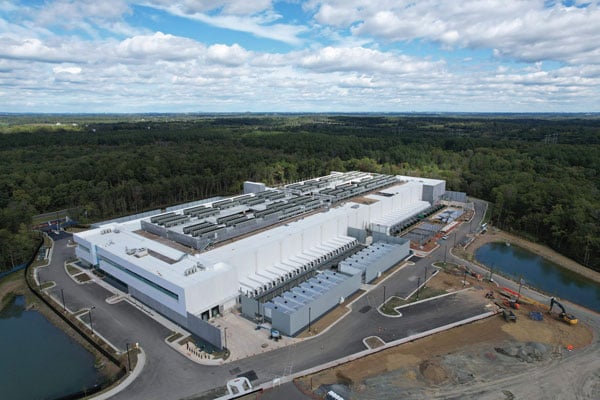
The Gainesville Crossing Data Center is a 130-acre master-planned data center campus located in what is known as “Data Center Alley” in Northern Virginia, outside of Washington, D.C.
About 90% of data center transactions in the first half of 2022 involved private equity firms. For example, Affinius Capital, a company formed from the integration of USAA Real Estate and Square Mile Capital, is developing a major data center, Gainesville Crossing Data Center (GCDC), in Gainesville, Virginia, with its partner Corscale. GCDC is a 130-acre master-planned data center campus. The multiphase project will encompass 2.3 million square feet over five two-story buildings.
“GCDC marks our first venture into the data center space,” said Brown. “We master planned this space for over 300 megawatts of critical IT capacity. Early last year, we started construction on our first building, a 72-megawatt facility. Within four months of breaking ground, we secured a commitment for the building from a hyperscaler (single companies that operate massive, centralized and custom-built computing facilities). We are currently in design and development for future phases. Within the next six months, we will break ground on an additional 72-megawatt building and a 54-megawatt building, which will both be leased to hyperscalers.”
Data Center Market Will More Than Double by 2030
McKinsey & Co. expects the data center industry to grow from 17 gigawatts (GW) in 2022 to about 35 GW by 2030. The data center industry doesn’t typically measure the size of a facility in square feet, but rather in megawatts (MW). For perspective, a megawatt of electricity can power about 400 to 800 homes for one year, while a gigawatt of electricity can handle 876,000 homes for one year. The U.S. Department of Energy (DOE) notes that data centers are one of the most intensive building types, consuming 10 to 50 times more energy than a typical commercial building. DOE estimates that data centers and servers now use approximately 2% of all U.S. electricity.
Data center inventory growth has accelerated across North American markets in response to the sharp increase in demand. Total data center inventory in the top 12 markets has more than doubled since the beginning of 2020, according to Avison Young’s U.S. data center update for Q2 2023.
Northern Virginia continues to extend its lead in overall data center market size, but the Phoenix and Atlanta markets are currently experiencing the fastest growth. While the first half of 2023 witnessed robust growth in the data center market, data center developers in most major and secondary markets are struggling with a supply-and-demand imbalance, leading to a shortage of co-location space and rising pricing, according to JLL.
Data Center Market Flourishes With High Demand/Low Vacancies
CBRE, in its September 2023 North American data center trends report, noted that despite supply-side issues, primary market absorption was 468.8 MW in the first half of 2023 compared with 484.8 MW in the first half of 2022. Pre-leasing is strong in the primary markets, with 1,673.1 MW (73.1%) of the 2,287.6 MW under construction pre-leased. Hyperscalers are securing space 24 to 36 months in advance of delivery of data center space. Northern Virginia’s data center vacancy rate is 0.94%, the lowest in the nation.
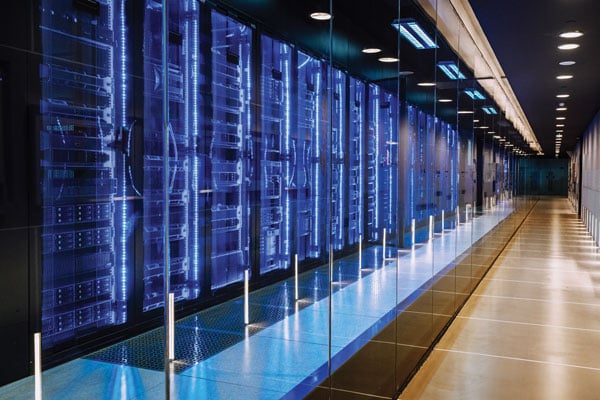
According to Department of Energy estimates, data centers and servers use about 2% of all U.S. electricity. Nikada/E+ via Getty Images
The top U.S. data center markets include Northern Virginia (the largest data center market), Dallas-Fort Worth, Silicon Valley, Chicago, Phoenix, Atlanta, Hillsboro (Portland, Oregon), and New York tri-state. Within these primary markets, there is an all-time high of 2,287.6 MW under construction, a 25% increase year over year. Strong demand and developer appetite are driving this market. That’s the good news. The bad news is that the lack of readily available power and extended lead times for key pieces of electrical equipment are delaying construction and delivery timelines.
“A great deal of leasing activity is on the AI side of the business and is focused in areas that have either traditional data center development corridors or are near large-scale power sources,” explained Andy Cvengros, managing director, data center solutions at JLL. “The drive to secure good sites near power is producing some unusual deals. As an example, we recently completed a transaction where 28 low-value homes were purchased and torn down to make way for a new data center. That land was far more valuable as a data center site. Groups are also looking at locations near big electrical substations.”
Even when construction delays occur due to issues like power availability, pre-leasing activity remains robust, according to those interviewed. “Let’s consider an example of a hyperscaler,” said Gordon Dolven, director of Americas Data Center Research at CBRE. “In the past, they may have leased from a provider about six to 12 months in advance. Currently, they are more inclined to pre-lease space 18-36 months ahead of time. This shift indicates a significant change in leasing practices.”
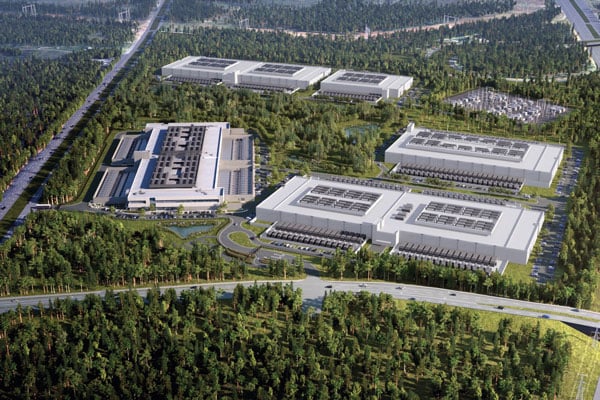
The Gainesville Crossing Data Center marks Affinius Capital’s “first venture into the data center space.”
In a dramatic turn in the leasing market, brokers are sending out letters of intent (LOI) rather than the typical requests for proposal (RFP). “Our clients have an immediate need for multiple megawatts,” said Lynch. “A few years ago, we would have issued an RFP to the market; now we approach the few providers with the required capacity directly with an LOI. We are not the only ones adopting this strategy on behalf of our clients. I have never encountered such a phenomenon in any form of real estate.”
Data Center Constraints
Across the U.S., with very few exceptions, the industry is looking at markets that are in a supply-and-demand imbalance, according to Holcomb. “There’s way more demand than there is supply. And right now, we’re looking at a very limited supply of available capacity. We’ve got a lot of groups that are in the beginning stages of development with new facilities, but it is going to take 24 to 48 months for many of these new developments to get built. Developments coming out of the ground are being pre-leased with rising rents. It is changing the way customers go about finding and obtaining space and capacity. They are having to start a lot earlier, and they are having to make commitments to facilities that may not even be constructed yet.”
Major data center markets are feeling the growing pains of this robust business, with places such as Northern Virginia encountering an unprecedented multiyear pause on development in some submarkets because of an energy shortage. This is causing the biggest hyperscalers and co-location companies to seek new secondary markets in which to build, according to Cushman & Wakefield.
“We are experiencing a power shortage in the industry,” said Lynch. “This has led to a shift in clients’ preferences. Previously, clients may have preferred locations like Northern Virginia or Silicon Valley. Now, they are considering alternatives such as Reno [Nevada] or Columbus, Ohio. The strategy is changing. Instead of focusing on bringing power to the site, we’re seeing a shift toward bringing the site to the power.”
A hyperscaler’s data center can use as much power as 80,000 households, according to a report by McKinsey & Co. Although many hyperscalers are working on ways to lower energy and water use, it is a challenge.
In 2021, for example, Google disclosed that it used 3.3 billion gallons of water at data centers in the U.S. and an additional 1 billion gallons globally. A large data center will use between 1 million and 5 million gallons of water a day. According to a Virginia Tech study, data centers rank in the top 10 of U.S. industries for most water consumption.

Data center inventory has more than doubled in the top 12 markets since the beginning of 2020. Wirestock via iStock/Getty Images Plus
“People are often concerned about data centers’ high water consumption,” noted Keith Simpson, director of engineering for the mid-Atlantic region of Bohler. “If a data center is located near a lake or a river, the water can be taken directly from the body of water and filtered on-site. If not, [the developer] has to tap into the community water supply and draw a lot of the available water. We are hopeful that as data centers transition from air-cooling to liquid-cooling systems, the demand for water will decrease.”
Public Opposition
Five or 10 years ago, data centers did not experience the same level of community opposition as they do today, Simpson said. “While data centers still have minimal impact on local resources such as schools and traffic, communities are increasingly seeing large buildings [data centers] that many view to be unattractive, loud and environmentally unfriendly.”
Simpson said that design and development teams can play an integral role in easing community concerns by addressing aesthetics and mitigating sound pollution. Through the use of faux windows, appealing color schemes and dynamic light displays, data centers can have a more-pleasing visual impact. A strategic site layout can also help mitigate sound by using existing land contours and supplemental landscaping to act as barriers.
Complex Data Centers Evolve
AI’s immediate impact on new data centers revolves around the requirement for complex new processors to be installed that need more cooling equipment to function properly. In data centers, Holcomb explained, a traditional server that uses CPUs has been the standard. Now, Nvidia has introduced to the market a chip known as the GPU, or graphics processing unit. Historically, these have been used for heavy graphics, such as those in video games, and other applications such as cryptocurrency mining. However, the processing power and the nature of the chip makes it well suited for the computations required by AI.
While GPUs are more expensive than CPUs, the increased cost is justified by their vastly superior processing capabilities. This enhancement is a key enabler for AI, according to JLL’s Cvengros. These new chips consume several times more power per cabinet than the older processors. Unfortunately, this increased power density is leading to the requirement for water cooling at the rack level and the chip level — a need that many facilities are not equipped to accommodate.
“Consequently, the design of new facilities is shifting to support these higher densities,” Cvengros said. “We’ve seen a significant rise in power consumption per cabinet — from 5 kW [kilowatts] to 7 kW a few years ago, to the current 15 kW to 17 kW. The latest processors sometimes require a massive 50 kW or more. Traditional data centers are struggling to manage these power loads, which necessitates design alterations for future developments.”

Even as demand for data centers has exploded, they have faced increased public opposition, including by those who view them as environmentally unfriendly. SanderStock via iStock/Getty Images Plus
Do these superpowered new data centers using GPUs doom older facilities using CPUs? Not at all, assured CBRE’s Dolven. There is such strong demand and low supply of data centers today that end users are bifurcating their use, he explained. “For instance, the end user might use a 20-year-old co-location facility or data center for storage or low-density computing needs. The AI-related needs — real-time transaction work and high-density work — are often moved to the new facilities.”
Data Center Developers
Data center development isn’t for everyone. Industrial developers thinking about entering this business might want to consider pursuing a joint venture with an experienced company, according to those interviewed. Typical of the type of developer in this business is Corporate Office Properties Trust (COPT) of Columbia, Maryland. The company got involved in the data center business in 2003 with a U.S. government customer. By 2008, COPT owned and facilitated property management at five data centers totaling 872,000 square feet of space for defense/IT customers. The company said that from 2013 to the present, it has leveraged its development expertise and customer relationships into a growing, build-to-suit platform in data center shells for cloud computing government contractors.
“The data center sector demands substantial capital and specialized execution, particularly when it comes to building the facility,” said Brown. “Unlike the construction of a warehouse, office building or multifamily building, few companies have the capability to build a data center.”
Similarly, Lynch cautioned that while the data center sector is a great business to be in, it can also be quite costly and challenging, particularly for local developers. “When local clients approach us with a potential location for a data center, we will do a detailed analysis,” he said. “If the location proves suitable, we will usually advise the client to partner with a large, experienced company in the business. This is no reflection on the client’s capabilities; rather it is a reflection on the complexity of the data center business today.”
Ron Derven is a contributing editor to Development magazine.
Artificial Intelligence Is Not NewArtificial intelligence (AI) did not appear out of the blue in November 2022 with the introduction of ChatGPT to the general public. AI had its introduction more than 70 years ago, in 1950, when Alan Turing, the brilliant mathematician, published his paper on AI titled “Computer Machinery and Intelligence,” which proposed a test of machine intelligence. Yet ChatGPT and other so-called generative AI apps are having an explosive impact on the public and business and, therefore, on data centers. Just how explosive? Consider this: It took Netflix 3.5 years to reach 1 million users online. Later, it took Instagram 2.5 months to hit the 1 million mark. But it took only five days for ChatGPT to top 1 million users; as of Nov. 3, 2023, it had more than 180 million users. Since the introduction of ChatGPT, a new text-sharing app has been introduced called Threads, which is owned by Meta, the parent company of Facebook. Threads took only five minutes to hit 1 million users and just 2.5 hours to reach 2 million users. It took two days to reach 100 million. Only one day after the introduction of Threads, users had generated 95 million posts and 190 million “likes” on the app. |
5 Types of Data CentersThere is no one-size-fits-all when it comes to data centers, and depending on who is counting, five popular types of data centers are operating today. Enterprise data centers: The enterprise data center supports a single organization. It is typically built, maintained, operated and managed by companies, such as banks, brokerage firms and insurance companies, for their own use. Multitenant or co-location data centers: The co-location data center is one where a company will rent space within that data center, which is owned by others and located off premises from the company. Hyperscale data centers: Hyperscale data centers are those of Amazon Web Services, Microsoft and IBM, and support their large-scale IT infrastructure. Edge data centers: Edge data centers are owned by third parties in a specific metro area to bring IT infrastructure closer to users. They handle real-time data processing. These centers reduce communication delays. Container data centers: Container data centers come in shipping containers or modules. These are ready-made data centers. They are plug-and-play, with all the components ready to go. |
RELATED ARTICLES YOU MAY LIKE
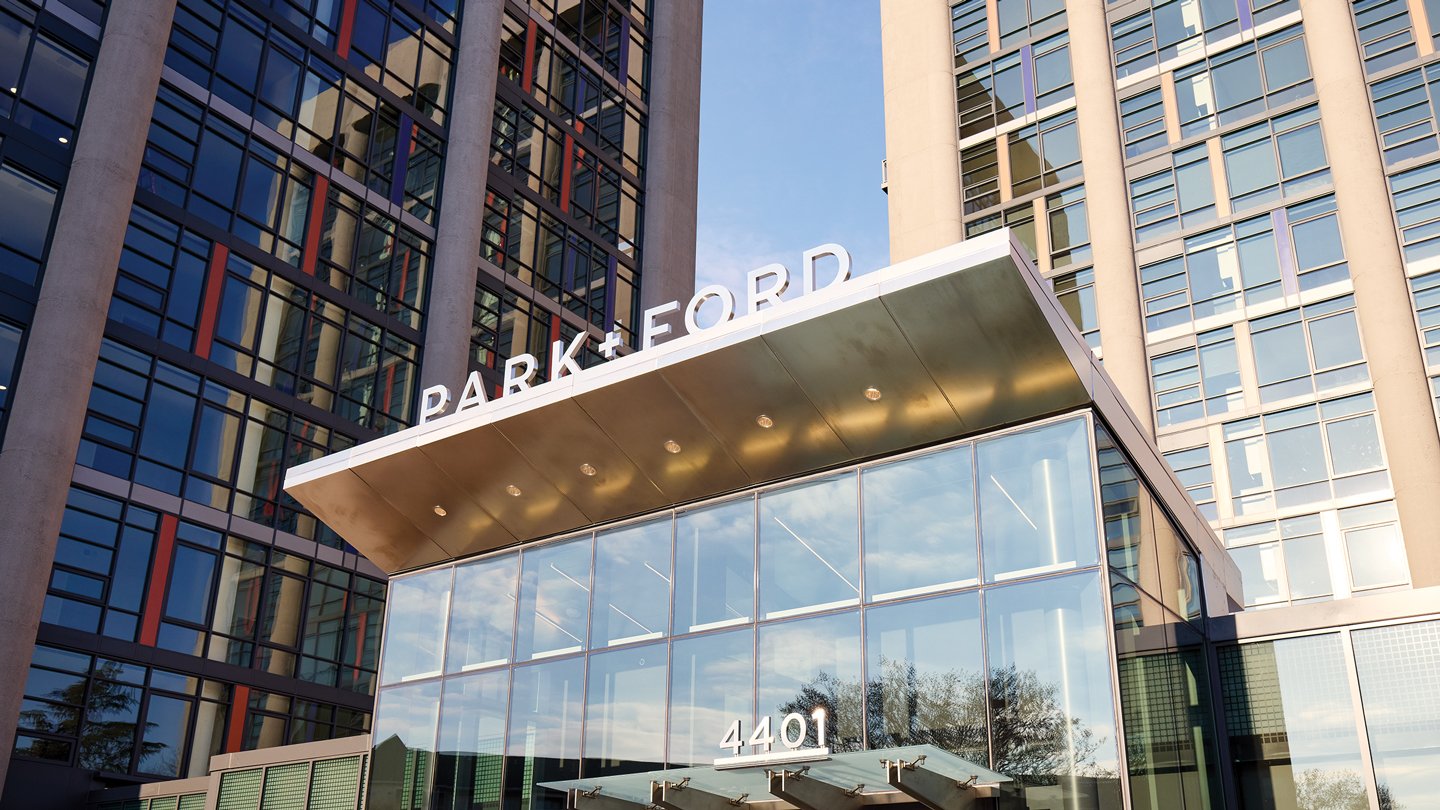
Revitalization and Revenue: Office Conversions as a Way to Rebuild Cities
It’s not a panacea, but reuse can inject life into business districts.
Read More
Facility Managers Must Prepare for an All-Electric Future
Before that, many commercial buildings could benefit from hybrid electrification.
Read More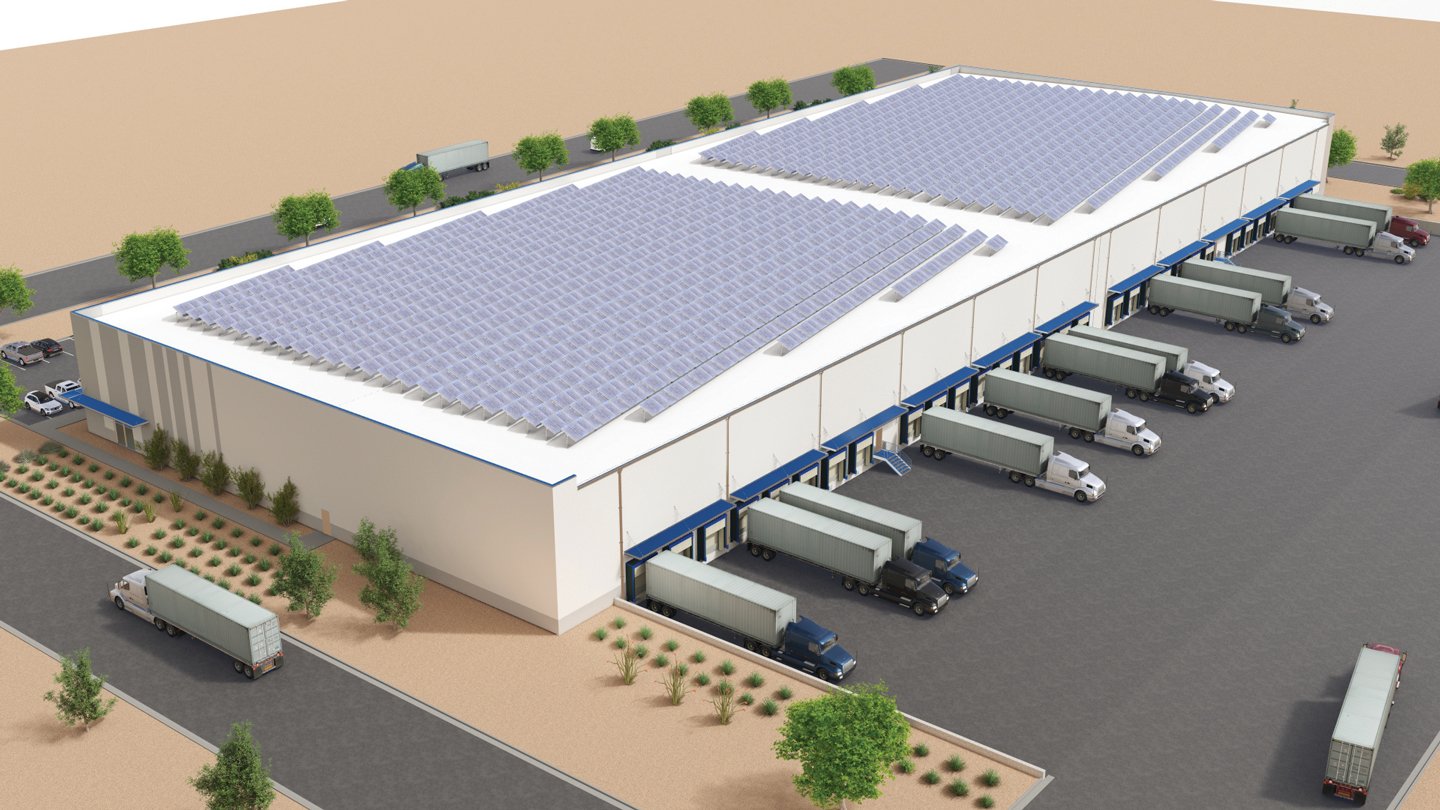
Developers Can Cash Out Tax Credits for Renewable Improvements
A major change to the tax code could greatly incentivize green construction in commercial real estate.
Read More


